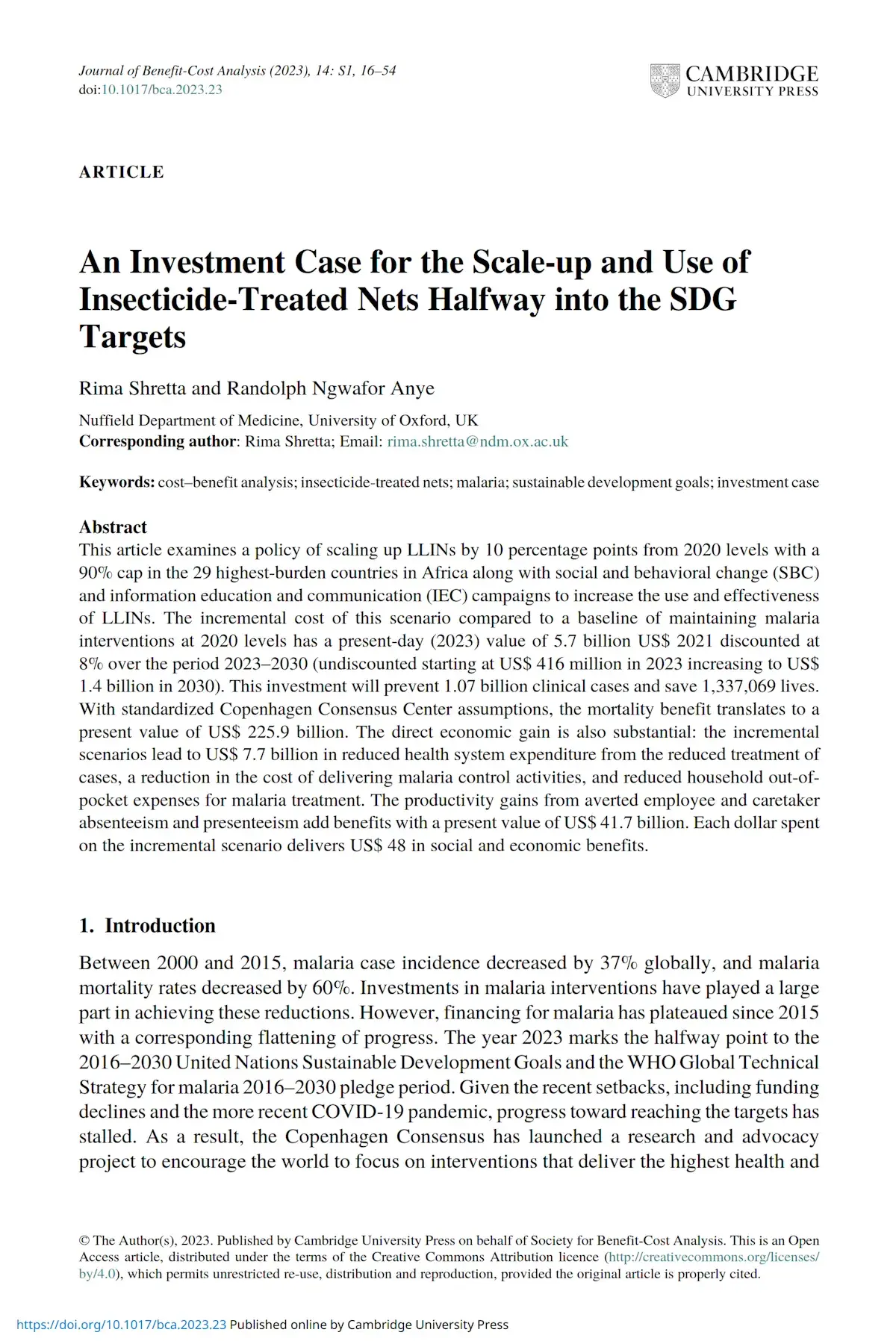Halftime for SDGs: Malaria
Best Investment Paper
Between 2000 and 2015, malaria case incidence decreased by 37% globally, and malaria mortality rates decreased by 60%. Investments in malaria interventions have played a large part in achieving these reductions. However, financing for malaria has plateaued since 2015 with a corresponding flattening of progress. The year 2023 marks the halfway point to the 2016–2030 United Nations Sustainable Development Goals and the WHO Global Technical Strategy for malaria 2016–2030 pledge period. Given the recent setbacks, including funding declines and the more recent COVID-19 pandemic, progress towards reaching the targets has stalled. As a result, the Copenhagen Consensus has launched a research and advocacy project to encourage the world to focus on interventions that deliver the highest health and economic value per dollar spent. The purpose of this study is to identify the most cost-effective malaria policy and quantify its socio-economic return, using the cost-benefit analysis guidelines from Copenhagen Consensus. The literature and the academic advisory group of the Copenhagen Consensus Center identify increasing distribution of long-lasting insecticide treated nets (LLINs) as the most effective malaria policy currently available. This article therefore specifically examines a policy of scaling up LLINs by 10 percentage points from 2020 levels with a 90% cap in the 29 highest burden countries in Africa along with social and behavioral change (SBC) and information education and communication (IEC) campaigns to increase the use and effectiveness of LLINs. The costs and epidemiological benefits of the intervention are generated using the SPPf transmission model that projects both costs and the decline of malaria cases and deaths with a scale up of 1.25 percentage points per year over 8 years (2023 to 2030), along with information campaigns to ensure better use of nets.
The incremental cost of this scenario compared to a baseline of maintaining malaria interventions at 2020 levels has a present day (2023) value of 5.7 billion US$ 2021 discounted at 8% over the period 2023–2030 (undiscounted starting at US$ 416 million in 2023 increasing to US$ 1.4 billion in 2030). This investment will prevent 1.07 billion clinical cases and save 1,337,069 lives. With standardized Copenhagen Consensus Center assumptions, the mortality benefit translates to a present value of US$ 225.9 billion. The direct economic gain is also substantial: the incremental scenarios lead to US$ 7.7 billion in reduced health system expenditure from reduced treatment of cases, a reduction in cost of delivering malaria control activities, and reduced household out-of-pocket expenses for malaria treatment. The productivity gains from averted employee and caretaker absenteeism and presenteeism add benefits with a present value of US$ 41.7 billion. Each dollar spent on the incremental scenario delivers US$ 48 in social benefits.
The evidence documented by this study can be used within a resource mobilization strategy to facilitate advocacy actions for increased investments in LLINs and social and behavior change communication (SBCC) for better usage of the nets towards reducing the burden of malaria.
The final peer-reviewed published article can be found here:


